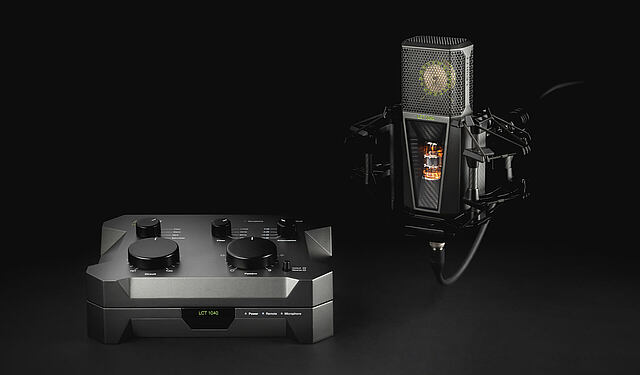
Blog
True love for great sound unites us.
Blog
True love for great sound unites us.

If you are interested in microphones and have researched getting an excellent microphone, you probably came across tube microphones.
But what does the tube really do? Do you need one if you want to record high-quality vocals? In this blog, you will learn how tube mics sound, if you need one, and how they work.
At LEWITT, we’ve been building professional tube microphones featured on many #1 hit songs for over a decade. Our product specialists check every blog post, so the info you get is 100% fact-checked.
Let's dive right into the magic world of tube microphones.
First, let's listen to some sound samples recorded with a studio condenser microphone using a FET circuit and a studio condenser microphone with a tube circuit. Please use your studio monitor setup or headphones to hear the sound-defining details.
All sound samples were recorded with LCT 1040. It has 4 different tube modes and a separate FET circuit. And as you can hear, they sound quite different. Check out how you can shape your sound even more with the LCT 1040.
The simple answer: they can sound outstanding. Most popular tube microphones are in the premium sector of microphones. Since it's already expensive to make an excellent quality tube microphone, other components are often also of premium quality.
Yet the real "magic" of tube microphones, and why their sound is perceived as better than regular microphones, is due to extra harmonics.
Tube microphones make your signal richer by adding even harmonics and adding subtle compression.
When you run audio through a tube circuit, it adds "even harmonics" that the human ear perceives as euphonious (a fancy word meaning 'nice-sounding'). The signal is not only richer but also gently compresses, adding another component to the magical tube sound.

Check out the video below to learn more about tube sound.
LEWITT tube microphones
One downside of tube microphones is that some have high self-noise, especially older circuits. A microphone with high self-noise is problematic in modern music production contexts.
After vocal layering and heavy compression, the self-noise will become audible and have a negative impact on your recording.
Some "classic" tube mics were designed and produced over 70 years ago. They do sound great, but older technology and products can be unreliable and therefore need recurring maintenance.
Our tube microphone lineup solves these problems for you.
The LEWITT PURE TUBE has the lowest self-noise in any tube microphone, i.e. only 7 db (A), ensuring you will never have problems with noise in your recordings, even while using heavy compression.
Our tube microphones are built to last. To emphasize their reliable design, we offer a 10-year warranty on the PURE TUBE and LCT 1040.
Electrical signals produced by the capacitor in a mic capsule are tiny, and they need to be amplified before they can be sent down a cable to the rest of your gear. This onboard amplification inside a mic’s body is called a head amplifier or head amp.
The primary component of any head amp is the amplifier itself, which can be based on a vacuum tube or a Field Effect Transistor (FET). They do the same job, but in very different ways.
A tube or triode has three conductors inside. When the tube heats up, electrons start to flow through the vacuum in the tube, from the cathode to the anode, while the grid sits in between them, watching the tiny signal coming from the capsule.
As electrons flow through the grid on their way from the cathode to the anode, the grid modulates the flow, turning it into a greatly amplified low-impedance version of the grid signal that’s ready to send down the cable.
Click here, if you want to learn more about how a microphone works.
Tube microphones can be a great tool to create outstanding and high-quality recordings. They can give you a new and different sonic flavor when needed.
If you have any questions about tube microphones or any other audio-related topics, feel free to reach out via email or social media.